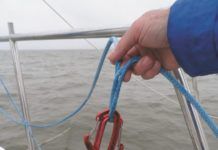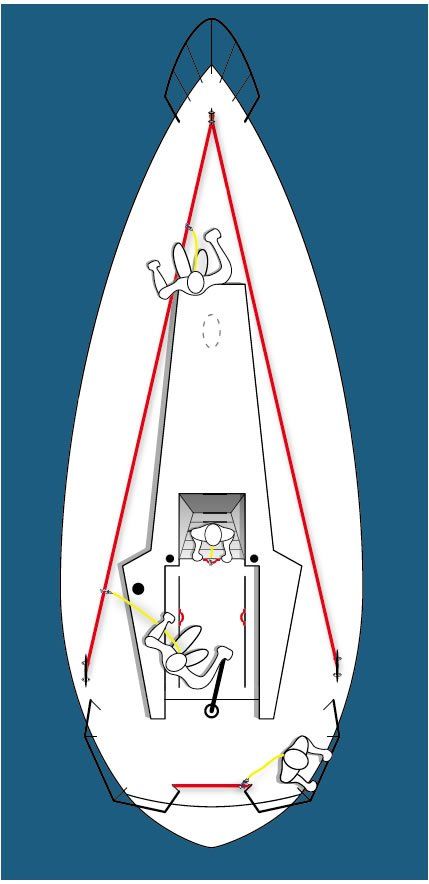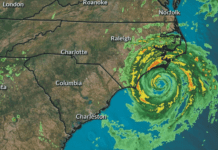
The International Sailing Federation (ISAF), the world governing body for the sport of sailing, has established clear guidelines for ISAF-sanctioned events, and these are generally applied to offshore racing-ISAF-sanctioned, or not-around the world. Among the recommendations are the following:
Jackstays shall be:
1. Attached to through-bolted or welded deckplates or other suitable and strong anchor points fitted on deck, port and starboard of the boats centerline to provide secure attachments for safety harness;
2. Comprising stainless-steel 1 x 19 wire of minimum diameter 5 millimeters (3/16 inches), high-modulus polyethylene rope (such as Dyneema/Spectra), or webbing of equivalent strength; which, when made from stainless-steel wire shall be uncoated and used without any sleeving;
3. 20 kilonewton (2,040 foot-kilograms or 4,500 foot-pounds) minimum breaking strain webbing is recommended.
Clipping Points shall be provided:
1. Attached to through-bolted or welded deckplates or other suitable and strong anchorage points adjacent to stations such as the helm, sheet winches and masts, where crewmembers work for long periods; which, together with jackstays and static safety lines shall enable a crew member
a. to clip on before coming on deck and unclip after going below;
b. whilst continuously clipped on, to move readily between the working areas on deck and the cockpit(s) with the minimum of clipping and unclipping.
2. The provision of clipping points shall enable two-thirds of the crew to be simultaneously clipped on without depending on jackstays.
3. Warning: Beware of U-bolts as clipping points; see OSR 5.02.1a (This rule states that non-locking carabiners can slip off if rotated around the U-bolt.)




































